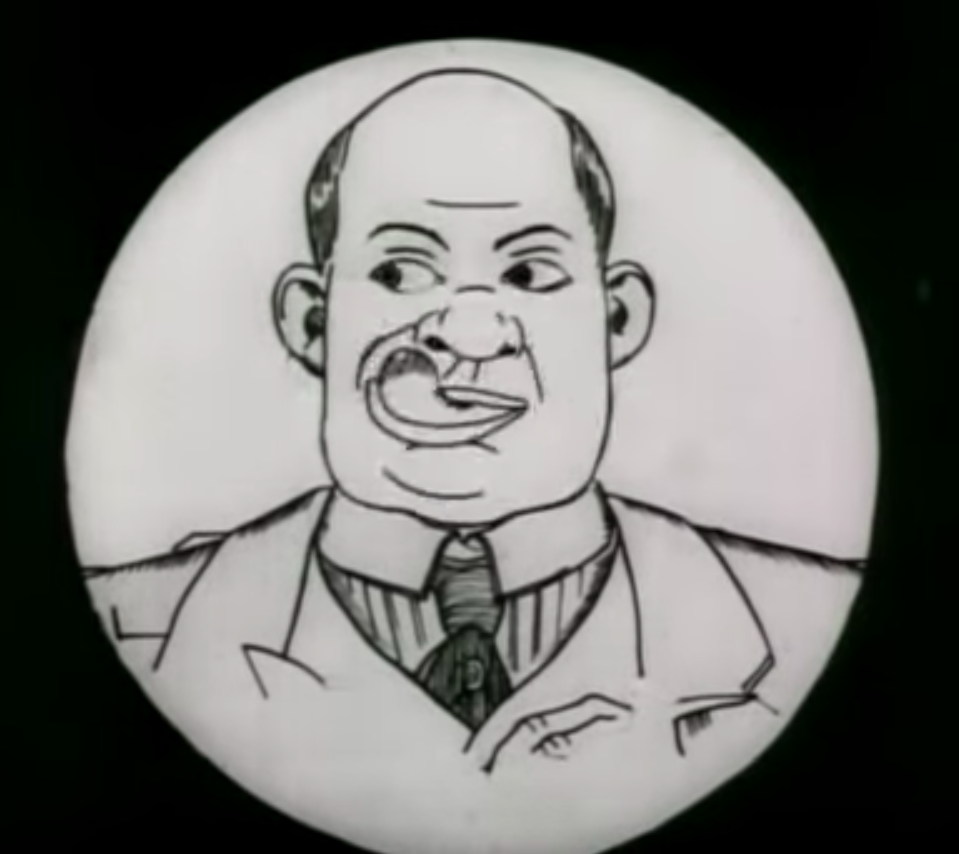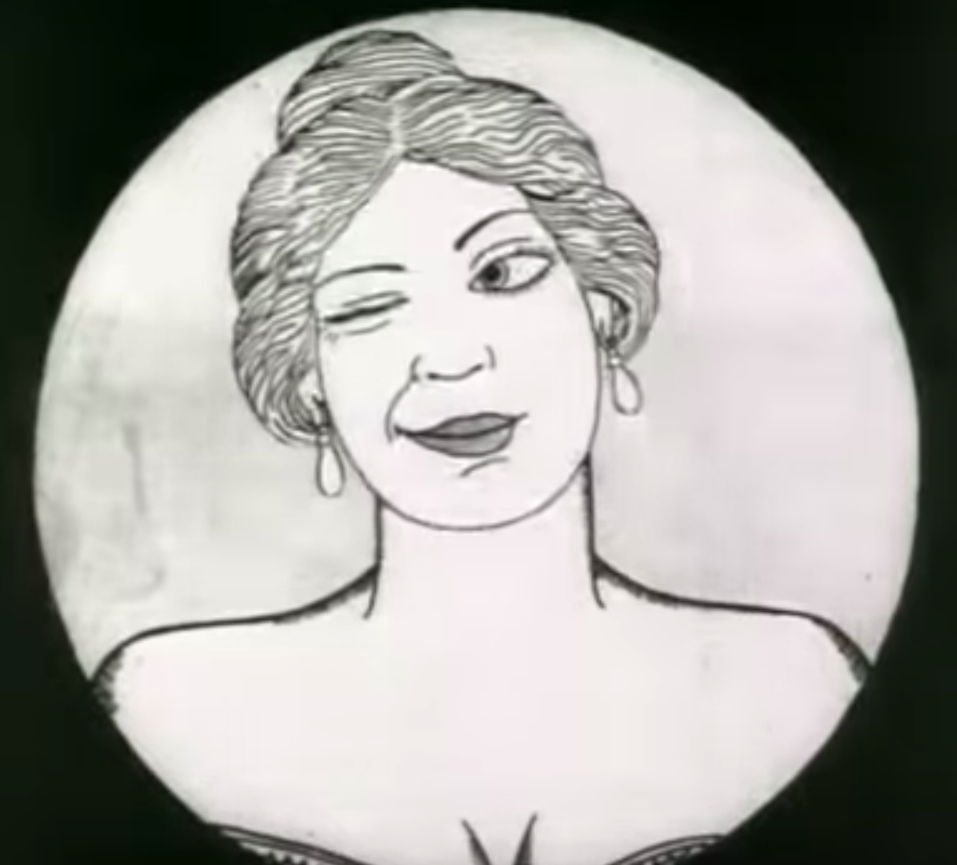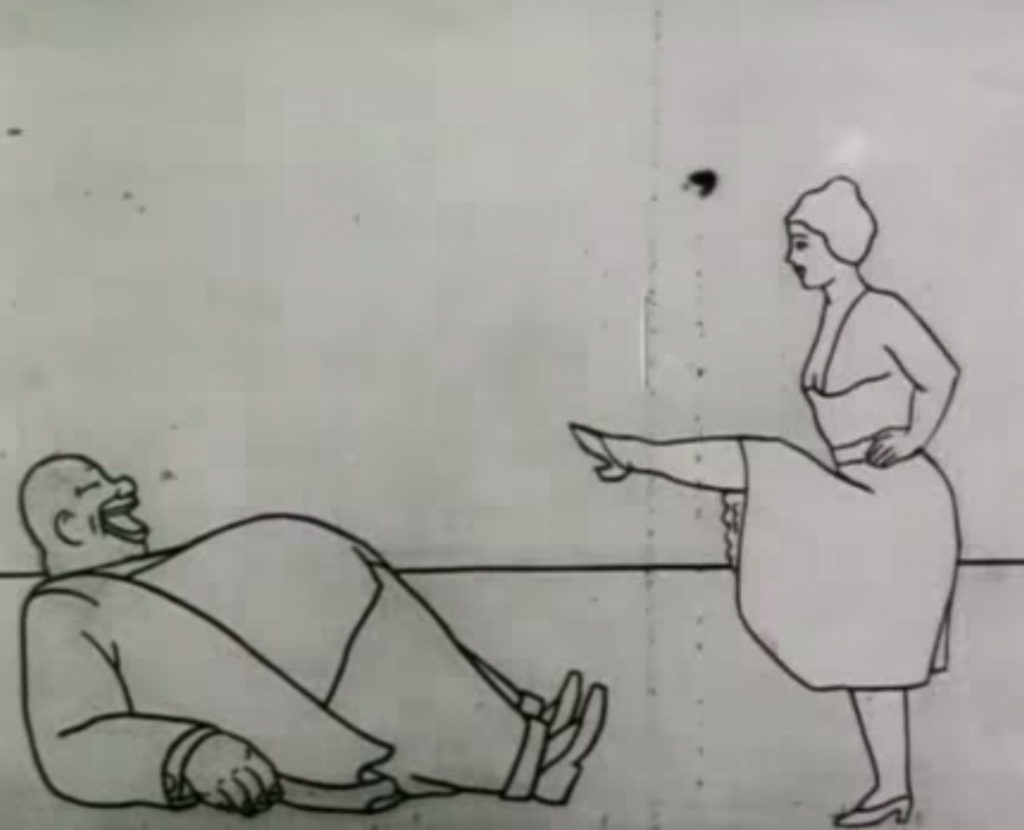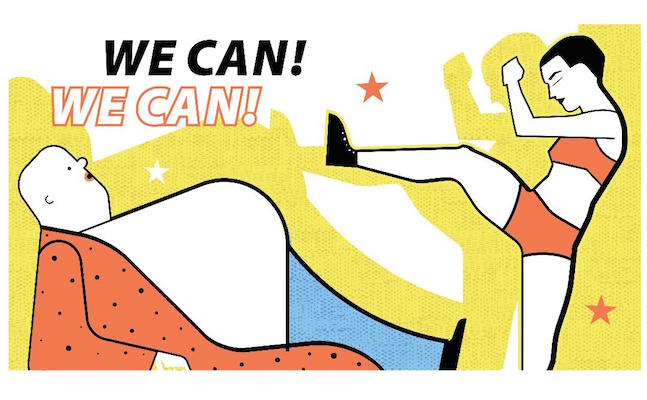How do you celebrate the end of a year like the one we’ve just witnessed? Our country is divided. Our planet is doomed. The only question is how we’ll kick the bucket. Burned by wildfires? Drowned by floodwaters? Suffocated by greenhouse gasses? And there’s always the déjà vu threat of nuclear war. Still, we (and Time magazine) feel that there is one reason to raise our glasses of bubbly — one victory that offsets many defeats: the anti-sexual assault and harassment revolution. With that in mind, dear reader, here is our gift to you: DIY #MeToo ornaments featuring the year’s naughtiest (to put it very mildly) and nicest Hollywood figures.

 The inspiration for our guest artist Bee Murphy’s illustrations came from an unusual source: the first Soviet animated film. Watching it, we were struck by the uncanny resemblance of its antihero to the disgraced bathrobe-clad producer, not only in his appearance but in his actions toward women.
The inspiration for our guest artist Bee Murphy’s illustrations came from an unusual source: the first Soviet animated film. Watching it, we were struck by the uncanny resemblance of its antihero to the disgraced bathrobe-clad producer, not only in his appearance but in his actions toward women.


Soviet Toys (1924), written and directed by the legendary pioneer Dziga Vertov, was released after the death of Vladimir Lenin but before the birth of Mickey Mouse. Its villain, the historic Harvey Weinstein lookalike, is a lampoon of a Soviet nouveau riche “NEPman,” a type that emerged during the era of the New Economic Policy — when the Bolshevik authorities reintroduced elements of capitalism into their socialist state. Lacking in ideological consciousness, the NEPman indulges in gluttony and debauchery during the holiday season. He swallows a whole pig and commands a woman to appear and dance the cancan (a symbol of money-for-sex gender relations). These escapades are interrupted by a worker-peasant (a mythical hybrid of Soviet ideology), who cuts open the NEPman’s belly as if it were a piñata. And then things get really weird. Vertov substitutes one symbolic structure for another: his Christmas tree becomes a pyramid of Red Army soldiers. This film was made when the Bolsheviks were appropriating religious symbols for their holidays; the green of the tree was rendered metaphorically “red” until it was banned for a decade in 1927.
This was also the period when Vertov was starting work on his most celebrated film, Man with a Movie Camera (1929), creating a new cinematic landscape just as he had once created his own “toy” name: “Dziga” means “a peg-top” in Polish, while “Vertov” derives from the Russian word for “spinning.” He was born David Kaufman in Białystok (then Russian Empire, now Poland), one of three brothers — along with Mikhail and Boris — who all became filmmakers. The two older brothers moved to Moscow while the youngest emigrated. And so emerges yet another connection between Soviet Toys and Hollywood, the figure of Boris Kaufman, who lensed films on both continents working with legendary directors like Jean Vigo, Elia Kazan, and Sidney Lumet. He received an Oscar for On the Waterfront (1954) at the height of the Red Scare; in his speech, he couldn’t even thank his brothers, who were then living in obscurity in the USSR, unaware of the global acclaim and reverence they would receive one day.
Today, it is difficult to overestimate the influence of Dziga Vertov, which extends far beyond his dazzling urban symphonies and his revolutionary theoretical manifestoes. The man behind Man with a Movie Camera was constantly reinventing himself, looking at the world through myriad of “cine-eyes,” including those of a woman. While experimenting with animation and film theory, he also became obsessed with an unrealized project that was supposed to highlight the difference between the roles women play in capitalist and socialist societies. In Soviet Toys, we see the capitalist sex economy at work, while in Lullaby (1937), a controversial movie depicting mothers of the world, we see the end product of this idea.
And so, in the spirit of Vertov’s late work, we, together with Bee Murphy, reimagine the narrative of Soviet Toys, substituting the male symbolic order with the female. We say “no” to dancing the cancan to the tune of those in power. Standing together with Rose McGowan, we reject the culture of sexual harassment and resist the sexist economy. We can do better, and we will! Regardless of our gender, creed, or tree preferences, we can celebrate the courage of those who have made their voices heard. #WeToo can cherish their dazzling victory!




